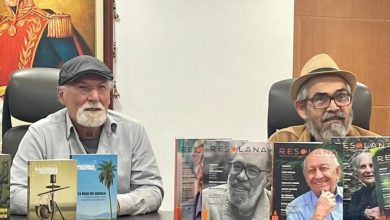

When did your journey in fine art begin, and what first inspired you to pursue it?
I have loved drawing since childhood and was often recognized for it at school. But when I was fifteen, I truly began to fall in love with fine art and started following artists on social media. Hyperrealist artists were my greatest inspiration at first, and that same year I began teaching myself how to draw hyperrealistic portraits, training myself on proportions, shading, and all the technical details. After graduating from high school, I had a clear realization: no matter what major I would study, I wanted to become a fine artist. That dream became more and more vivid as I grew older.
Growing up, were there particular stories, images, or experiences that shaped your fascination with vintage aesthetics?
As a child, I adored classic novels such as Sans Famille, A Little Princess, Pollyanna, and Little Women, and I loved the anime adaptations of these stories. I also had some illustrated storybooks with a vintage aesthetic that I loved reading. It is not necessarily that I love that historical period itself, because it had its own problems, but I truly adore their aesthetics, their fashion, architecture, and decor. I feel they were masters of beauty, and I have always loved everything that is beautiful and well-crafted. This later shaped my artistic identity and my mission to spread this kind of beauty.


How has living in Abu Dhabi influenced your artistic vision and the themes you explore?
As I mentioned before, at first I wanted to master hyperrealism, and I did reach an advanced level with it. But fine art in the United Arab Emirates is not only about technique and skill; it is also about concept. Some organizations even value the concept more than technical ability, which does not necessarily align with me. However, at the same time, I am very flexible in my journey, and I found myself wanting to grow in that aspect as well, exploring the stories behind my paintings, the messages I want to convey, and the symbols that promote an idea I love. Yet I also want to preserve the technical skills I worked so hard to develop and never give up on promoting mastery and beauty, no matter what. The good news is that art organizations here, whether in Abu Dhabi or other Emirates, have embraced my message. I feel happy now that I can do what I love while also improving my storytelling side. It gave me a clear vision and added another layer of strength to my refined skills, something I might not have discovered if I lived somewhere else.


You work with oils, pencils, and pastels — what does each medium allow you to express differently?
I began with dry media first, such as pencils, colored pencils, and pastels. Through them, I learned all the techniques I needed to draw portraits and realism with high precision and speed, mastering proportions and capturing likeness. I learned how to highlight things properly and trained my eyes to see accurately. Later, I moved to oil paints, which was the second stage of my artistic journey. The technique is completely different, as is the way of handling it. But because my foundations were strong, my first attempts went quite well, since my eyes already knew what the final result should look like. Over time, I learned about color theory, mixing, and all the other essentials. The reason I transitioned to oils is that they suit my vision better, my idea of spreading beauty, and they make it easier to add that dramatic atmosphere in my paintings through lighting and unique backgrounds that help tell the story behind the portrait. As Bob Ross once said, oils are very forgiving and easy to work with, which allows me to add or change things whenever I feel like it, unlike dry media, which are more limited by the initial sketch.
Could you describe your process from the first spark of an idea to a finished painting?
Usually, I do not like to plan my paintings too much. I prefer them to come naturally, especially if the subject is nature or a conceptual idea. But sometimes, unique ideas come to me when I am sleepless or after I dream of something inspiring. I wake up with a wonderful idea and immediately start mixing colors and applying them to the canvas. I only plan when the piece includes a face, to ensure proper proportions. Then I work layer by layer, where each new layer not only adds new details but also enhances and beautifies what is already there, until the painting is complete. The best moment is when you see your dream transformed into reality.

Light and shadow play a central role in your work — how do you use them to convey emotion or atmosphere?
Sometimes, I feel that I pay more attention to lighting, shadow, and value contrasts even more than color choice itself, because they not only give dimension to the work but also strengthen the message and the dramatic mood of the painting. I adore scenes where there is darkness and a soft source of light on one side, and how that light affects the face.. I am even planning to create a series of paintings that express this very idea.
Many of your works explore nostalgia alongside the present. How do you translate that dialogue visually?
As I mentioned earlier, my love for vintage elements comes from the novels and shows I grew up with. These works were widely known and loved by many, so even though my paintings depict old or vintage scenes, they still feel familiar to people. They sense that they know these atmospheres but cannot quite remember them, and that is exactly the experience I want to give: a longing for things they may not fully recall but that stir feelings of nostalgia for beauty, craftsmanship, and tranquility in a world that values speed and simplicity.
Your art aims to uncover the “soul of the subject.” How do you define that in your work?
The soul of the subject is one of my main goals before creating any painting, because I belong to the classical and realist schools. Yet I do not want my art to be a mere imitation of reality. I want it to evoke unique emotions in the viewer. This “soul” forms through a combination of technical skill and conceptual depth. Realistic art can draw you beautiful, lifelike eyes, but portraying the soul means capturing the gaze. From the gaze alone, you can understand what the character is thinking, and that is the difference.

How do you personally define beauty, especially in the quiet details you capture?
Since childhood, I have adored all forms of fine and skillful arts that express high craftsmanship. Even though beauty today is often defined in quicker and simpler ways, I still love promoting excellence, not only in painting, but in any form of mastery such as music, performance, dance, singing, and more. All of these are beauty and skill. I try to reflect that through my paintings by drawing delicate details and subtle angles that the casual viewer might not notice, but that subconsciously influence them and deliver the emotion I want to convey. No matter how many people tell me that technical mastery is no longer important and that modernity matters more, nothing will stop me from creating art that is beautiful and refined. Beauty, in all its forms, should never be feared or hidden. It deserves even more focus, especially in today’s world and under the circumstances we live in.

Do you see your art primarily as storytelling, preservation of emotion, or both?
I see myself in both storytelling and preserving emotion. Both help me enrich my ideas and projects. The story is told through the character’s clothing and background, while the emotion is shown through their facial expressions. All of these elements are important to me to offer a beautiful experience to the viewer.
Looking ahead, in what direction do you see your artistic style evolving, and what legacy would you like to leave?
I cannot predict what I will paint or how my style will evolve in the future. Sometimes I feel I am slowly leaning toward surrealism, but I do not know where it will take me. What I do know is that I want to redefine beauty in a time where people try to hide it, diminish it, or accuse beautiful art of being “inside the box.” I hope to have a meaningful impact in redefining fine art. And like any artist, I dream of having my own gallery or academy where I can teach students to be authentic artists, supporting them in their journeys and guiding them to create art that truly reflects who they are, regardless of what the market demands.
Photo: Rawa’a Al Tartour Instagram




